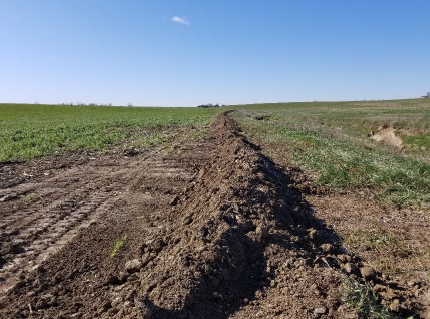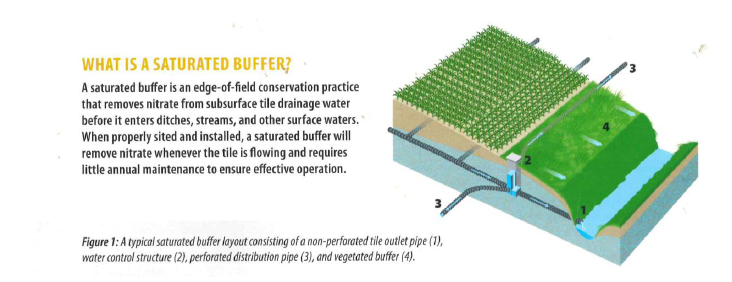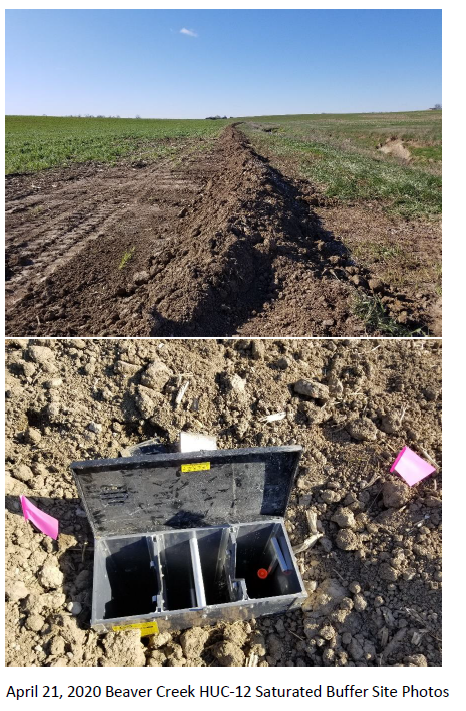
Mercer Soil and Water Conservation District (SWCD) was awarded an Ohio EPA 319 grant in 2018 to install multiple best management practices in the Beaver Creek HUC-12 (Grand Lake St. Marys) watershed. Mercer SWCD is pleased to announce that we have installed our very first saturated buffer practice in the Grand Lake St. Marys watershed. A saturated buffer is an edge-of-field practice that removes nutrients from subsurface tile drainage water before it enters ditches, streams and other surface waters. When properly sited and installed, a saturated buffer will remove nutrients, in particular nitrate, whenever the tile is flowing and requires little annual maintenance to ensure effective operation.
This practice is relatively inexpensive to install and takes no land out of crop production other than a filter strip along the watercourse. A study completed in northern Mercer County on a similar project site showed that 25% of the tile drainage water from the project area was diverted into the saturated buffer. The buffer removed nearly all of the dissolved nitrogen and phosphorus from the inflow water.
This Grand Lake St. Marys watershed saturated buffer project will be monitored for three years to determine its effectiveness starting in the summer of 2020. Wright State University-Lake Campus and Mercer County Ag Solutions will be monitoring the site to determine nitrogen and phosphorus removal. The monitoring is being funded through an alternative source of funding and is not part of the Ohio EPA 319 grant. Monitoring funding is being provided by the Blanchard River Demonstration Farms Project, which is a combined effort between Ohio Farm Bureau and the Natural Resources Conservation Service.
If you have interest in this practice, please contact Mercer SWCD at 419-586-3289 ext. 3 for more information.


